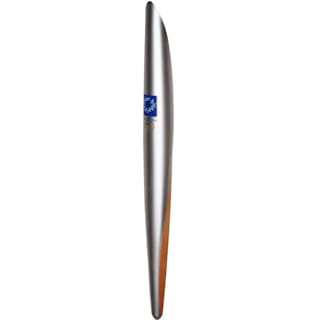
Olympic Games Athens 2004
Athens 2004The Torch
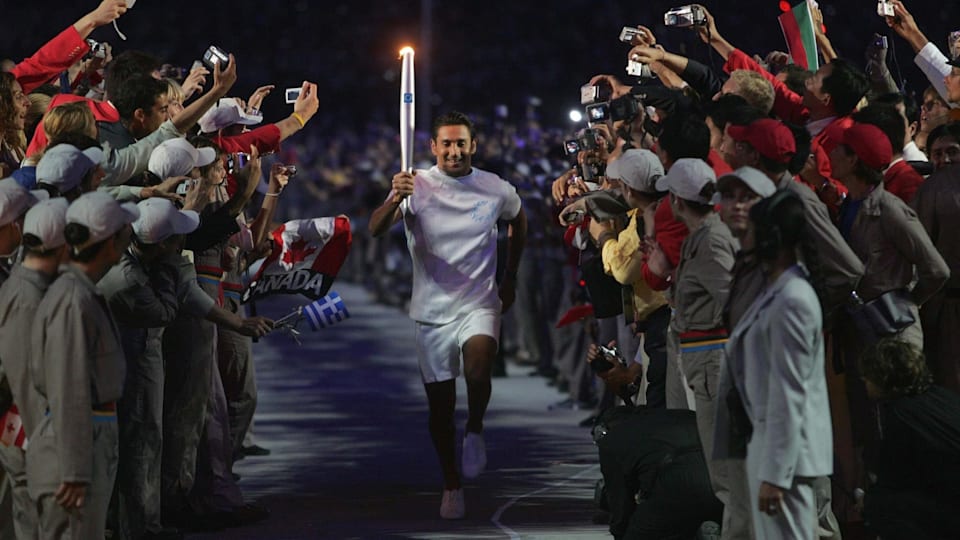
Route Design and Details
For the first time, and to celebrate the return of the Olympic Games to their country of origin, a “global” torch relay was organised. Before returning to Greece, it travelled across the five continents in reference to the five Olympic rings. The flame passed by all the cities that had hosted the Games since 1896, as well as other cities in the world that occupied a significant place in terms of sport, history and culture.
After the lighting ceremony which was held in Olympia on 25 March, the day of the 108th anniversary of the revival of the modern Olympic Games, a seven-day relay began across Greece, the last stage being the celebration at the Panathenaic Stadium. The flame stayed there for 64 days, burning in a special cauldron. It was only on 2 June that it was taken to Athens International Airport to fly to Sydney, host of the Games four years earlier. Cathy Freeman, Australian 400m gold medallist, kicked off the international relay on 4 June in Sydney.
The flame then headed to Melbourne, Tokyo, Seoul, Beijing, Delhi, Cairo and Cape Town, where it made its first journey on African soil. It then crossed the Atlantic to visit Rio de Janeiro, Mexico City, Los Angeles, St. Louis, Atlanta and New York. After Montreal, the flame came back to Europe and visited Antwerp, Brussels, Amsterdam, Geneva, Lausanne, Paris, London, Barcelona, Rome, Munich, Berlin, Stockholm, Helsinki, and finally Moscow, Kiev, Istanbul, Sofia and Nicosia.
On 9 July, the flame returned to Greece to embark on the last phase of the relay from Heraklion in Crete. The second part of the Greek relay lasted 36 days, visiting 54 prefectures, 32 islands and 24 archaeological and historical sites. It ended on 13 August with the lighting of the cauldron during the Opening Ceremony of the Games held in the Athens Olympic Stadium.
Map of the Route
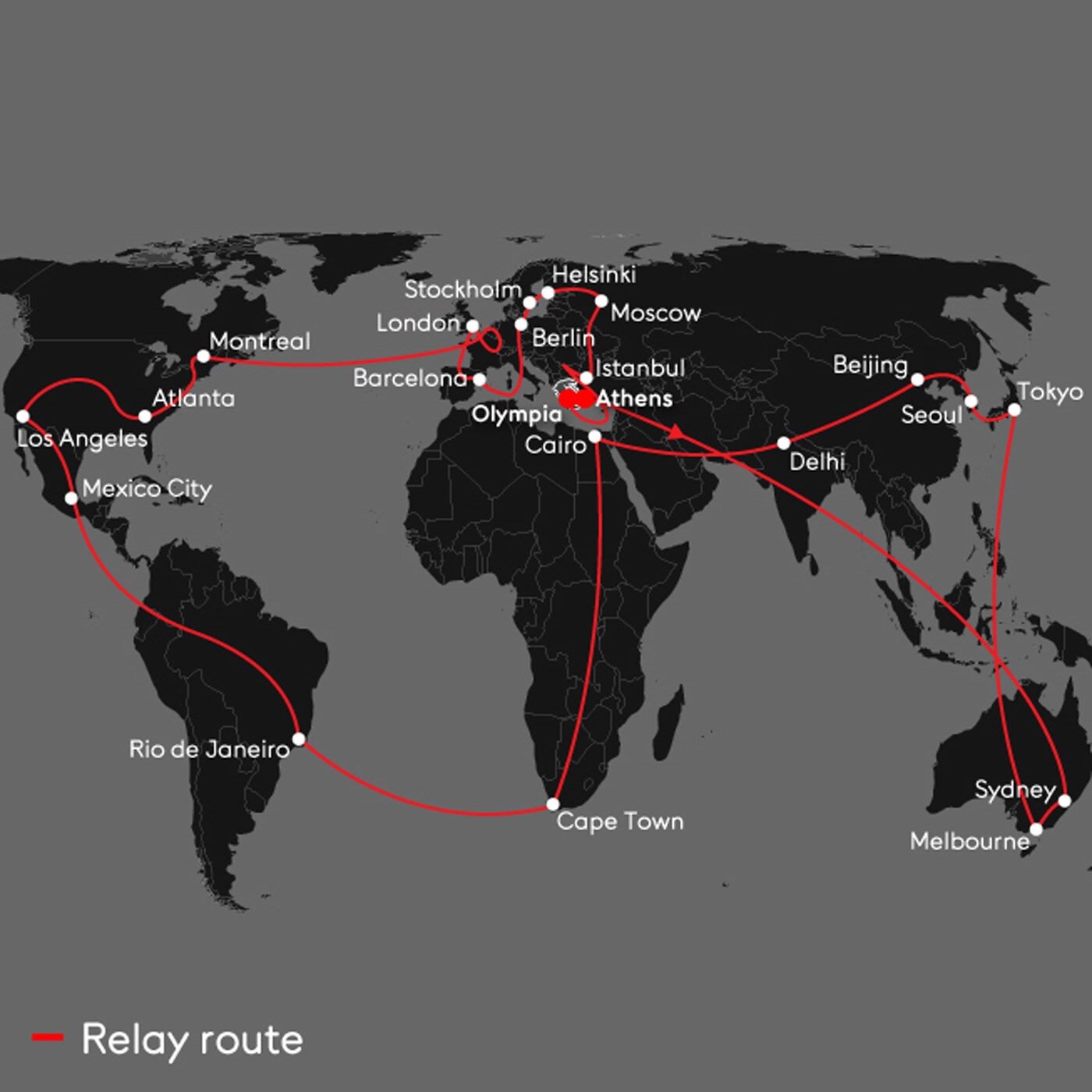
Facts and Figures
Start date: 25 March 2004, Olympia (Greece)
End date: 13 August 2004, Olympic Stadium, Athens (Greece)
First torchbearer: Kostas Gatsioudis, Olympic participant in athletics (1996, 2000)
Last torchbearer: Nikolaos Kaklamanakis, Olympic participant in sailing (1992, 1996, 2000, 2004, 2008), gold medallist in Atlanta 1996 and silver medallist in Athens in 2004
Number of torchbearers: ~7,700 in Greece, ~3,600 for the international relay
Recruitment of torchbearers: The selection criteria for the torchbearers was based on choosing people who played an important role in their communities through sport, education and culture, who inspired others and who embodied the values of the Olympic Games and the ideals of the Olympic Movement.
Distance: 6,600km in Greece, of which 2,500km was on foot, 2,800km by convoy and 1,300km by helicopter. 78,000km by land, sea and air for the international relay.
Countries visited: Greece, Australia, Japan, Republic of Korea, People’s Republic of China, India, Egypt, South Africa, Brazil, Mexico, United States, Canada, Belgium, Netherlands, Switzerland, France, United Kingdom, Spain, Italy, Germany, Sweden, Finland, Russia, Ukraine, Turkey, Bulgaria, Cyprus
Torch Details
Description: The shape of the torch recalls the simple and harmonious lines of an olive tree leaf. Its two-tone aspect, linking the wood of an olive tree and metal, echoes the two sides of the leaf, the colours of which are different. Its ergonomic design represents the extension of the moving flame. On the metal part is the emblem of the Games.
Colour: Brown, silver
Height: 65.5cm
Composition: Olive wood, aluminium
Fuel: Gas
Designer / Manufacturer: Andreas Varotsos / GA & L Harrington
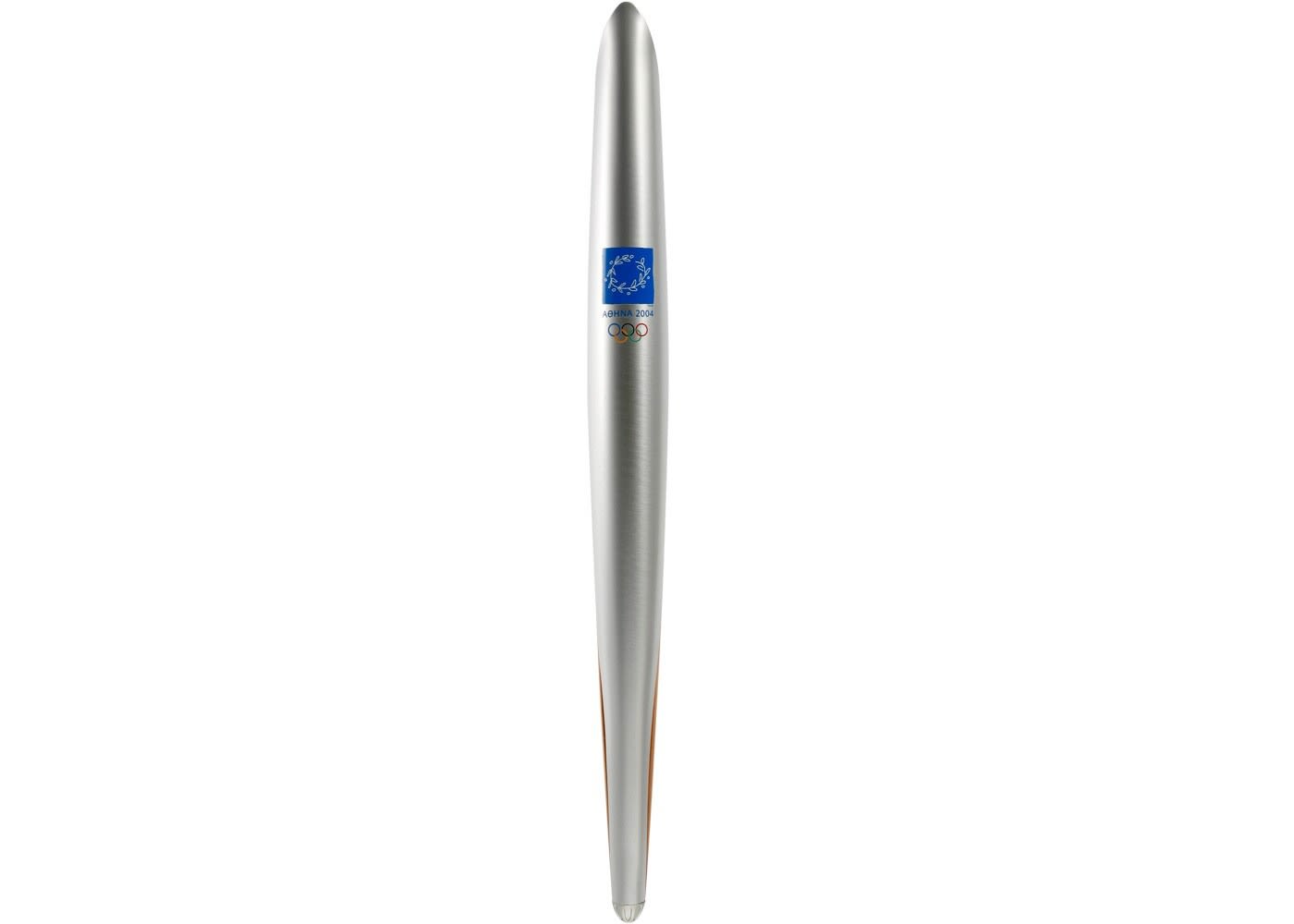
Did You Know?
The olive tree has a very strong symbolic connotation in Greece. It has been the sacred tree of the Mediterranean people for thousands of years and was the ancient symbol of the Athenian City State. It evokes peace and freedom. Thus, the Athens torch, in the shape of an olive leaf, was intended to be the bearer of a peaceful message on the five continents.
2004
Discover the Games
The Brand
A visual identity is developed for each edition of the Olympic Games.Brand
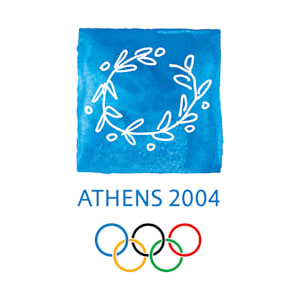
The Medals
Beginning as an olive wreath, medal designs have evolved over the years.Medals
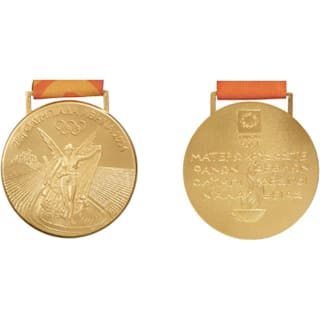
The Mascot
An original image, it must give concrete form to the Olympic spirit.Mascot
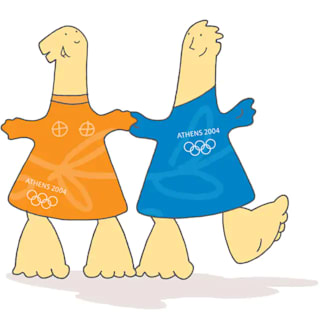
The Torch
An iconic part of any Olympic Games, each host offers their unique version.Torch
